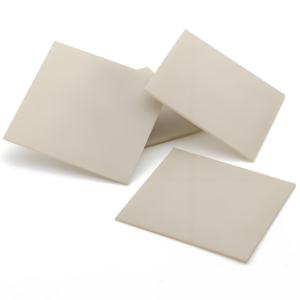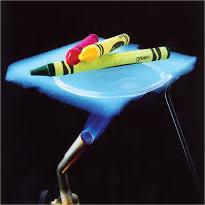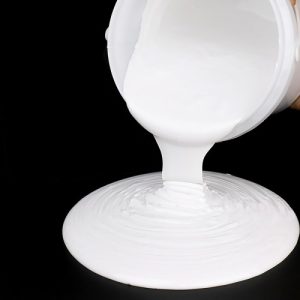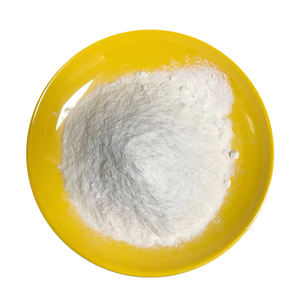Professional industry ceramic supplier, silicon nitride, silicon carbide, aluminum nitride and any other kinds of ceramics.
1. Introduction
Imagine trying to melt metal in your grandma’s favorite casserole dish. Spoiler: it ends in tears—and possibly a melted kitchen floor. Enter the silicon carbide crucible: the tough-as-nails, heat-defying vessel that laughs in the face of molten aluminum, bronze, and even glass.

These aren’t your average kitchen bowls. Silicon carbide crucibles are engineered for extreme environments where ordinary ceramics would throw in the towel (or melt into a puddle). Let’s dive into why these little black pots are the rockstars of high-temperature processing.
2. What Is a Silicon Carbide Crucible?
A silicon carbide crucible is a container made from silicon carbide (SiC)—a compound of silicon and carbon known for its insane hardness, thermal conductivity, and resistance to thermal shock.
Unlike your standard ceramic cookware (yes, even that fancy Staub dish), silicon carbide crucibles can handle temperatures north of 1600°C without breaking a sweat. They’re used in foundries, labs, and even jewelry-making studios where precision and durability matter.
3. Why Silicon Carbide? The Superpowers Explained
3.1 Thermal Conductivity That Would Make a Heat Sink Jealous
Silicon carbide conducts heat better than most metals. This means your crucible heats evenly—no hot spots, no cracks, just smooth, consistent melting.
3.2 Tougher Than Your Morning Commute
With a Mohs hardness of around 9–9.5 (diamond is 10), silicon carbide resists wear, corrosion, and chemical attack like a boss. Molten metal? Acidic fluxes? Bring it on.
3.3 Thermal Shock Resistance = No Drama
Pour cold water on a red-hot steel pan, and it screams. Do the same to a silicon carbide crucible? It shrugs. This material handles rapid temperature changes without cracking—a must for industrial cycling.
4. Silicon Carbide vs. The Competition
4.1 Boron Carbide vs Silicon Carbide: The Ultimate Showdown

Boron carbide (B4C) is harder—great for armor—but it’s brittle and expensive. Silicon carbide offers a better balance of toughness, cost, and thermal performance for crucibles. Think of boron carbide as the Olympic sprinter; silicon carbide is the marathon runner who also fixes your car.
4.2 Silicon Nitride: The Elegant Cousin
Silicon nitride (Si3N4) is another advanced ceramic—excellent for high-stress, high-temp applications like bearings or turbine blades. But for crucibles? Silicon carbide wins on thermal conductivity and cost-effectiveness.
That said, if you need a custom silicon nitride heat shield or a silicon nitride ring for a pump, Si3N4 shines. Just don’t expect it to replace your trusty silicon carbide crucible anytime soon.
5. Beyond the Crucible: The Wild World of Silicon Carbide Products
Silicon carbide isn’t just for melting metal. Its versatility is borderline absurd:
- Silicon carbide ceramic tiles line furnaces and kilns.
- RBSiC silicon carbide tile blocks support heavy loads at high temps.
- Silicon carbide ceramic columns and bricks reinforce industrial structures.
- Silicon carbide burner nozzles endure flame erosion in combustion systems.
- Even silicon carbide ceramic baking dishes exist—though we don’t recommend using them for Sunday roast unless you enjoy eating off something that looks like volcanic rock.
And yes, there’s such a thing as a silicon carbide ceramic butter dish with lid. Because why not store your artisanal churned cream in a vessel that could survive a meteor strike?
6. Industrial Plumbing? Yep, Silicon Carbide Does That Too
Need pipes that won’t corrode in aggressive chemical environments? Silicon carbide ceramic pipes and tubes have you covered.
From silicon carbide thermocouple protection tubes to porous ceramic tubes for filtration, this material thrives where metals fail. Bonus: silicon carbide zirconia tubes combine the best of both worlds—toughness meets stability.
7. Kitchenware or Labware? Sometimes It’s Hard to Tell

The line blurs when you see listings for ‘silicon carbide ceramic dinner plates’ or ‘silicon carbide blue white porcelain plates.’ Are these functional tableware or artistic novelties? Probably both.
While true silicon carbide dinnerware is rare (and likely overkill for spaghetti night), some manufacturers blend SiC into ceramic glazes or use it in high-end bakeware for superior heat retention. Just don’t confuse your silicon carbide casserole ceramic dish with your actual crucible—your guests might get nervous.
8. Discs, Taps, and Other Oddities
Silicon carbide discs? Absolutely. Used in grinding, sanding, and even as ceramic disc taps in plumbing.
Silicon carbide ceramic grinding discs cut through stone like butter. And those ‘silicon carbide diamond grinding discs for pottery’? They’re basically the Excalibur of ceramic shaping tools.
Even piezoelectric applications exist—though silicon carbide piezo ceramic discs are niche compared to traditional PZT materials.
9. The Bigger Picture: Advanced Ceramics in Industry
Silicon carbide crucibles are just one slice of the advanced ceramics pie. Alongside alumina (Al2O3), zirconia (ZrO2), and aluminum nitride (AlN), SiC forms the backbone of modern industrial ceramics.
These materials enable everything from semiconductor manufacturing to aerospace components. And while ‘aluminiumoxid keramik’ might sound fancy in German, it’s just alumina—still no match for SiC in thermal conductivity.
10. Conclusion
The silicon carbide crucible may not win beauty contests (unless you’re into sleek, matte-black, slightly gritty aesthetics), but it’s indispensable in high-heat applications worldwide.
From foundries to futuristic dinnerware, silicon carbide proves that sometimes, the toughest materials make the most unexpected appearances. So next time you see a ‘silicon carbide ceramic salad bowl,’ tip your hat—it’s probably tougher than your blender.
Our Website founded on October 17, 2012, is a high-tech enterprise committed to the research and development, production, processing, sales and technical services of ceramic relative materials such as Silicon. Our products includes but not limited to Boron Carbide Ceramic Products, Boron Nitride Ceramic Products, Silicon Carbide Ceramic Products, Silicon Nitride Ceramic Products, Zirconium Dioxide Ceramic Products, etc. If you are interested, please feel free to contact us.





